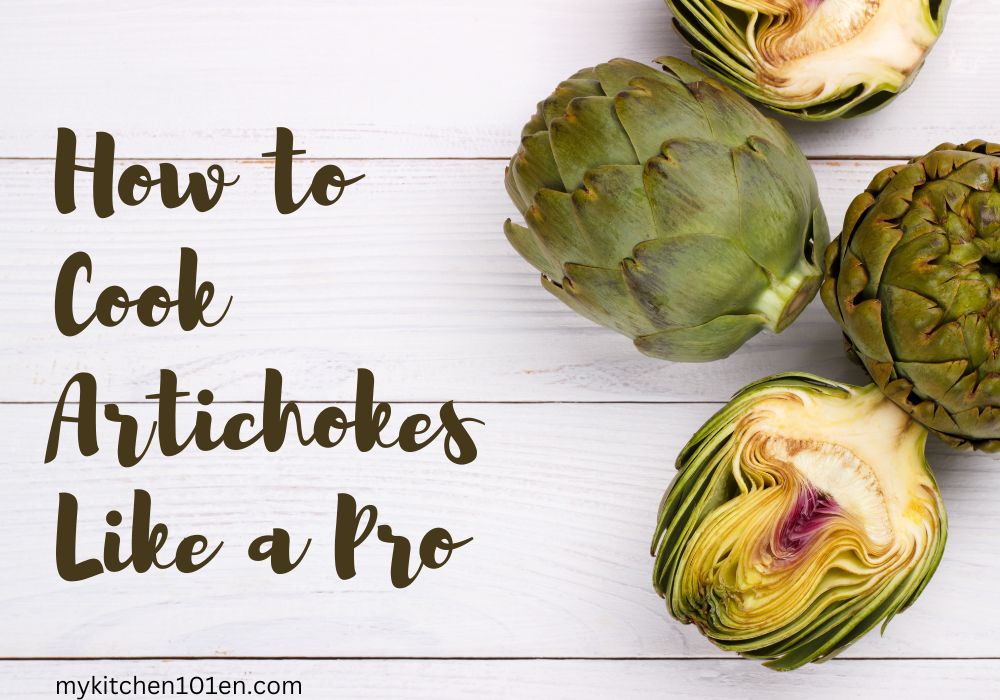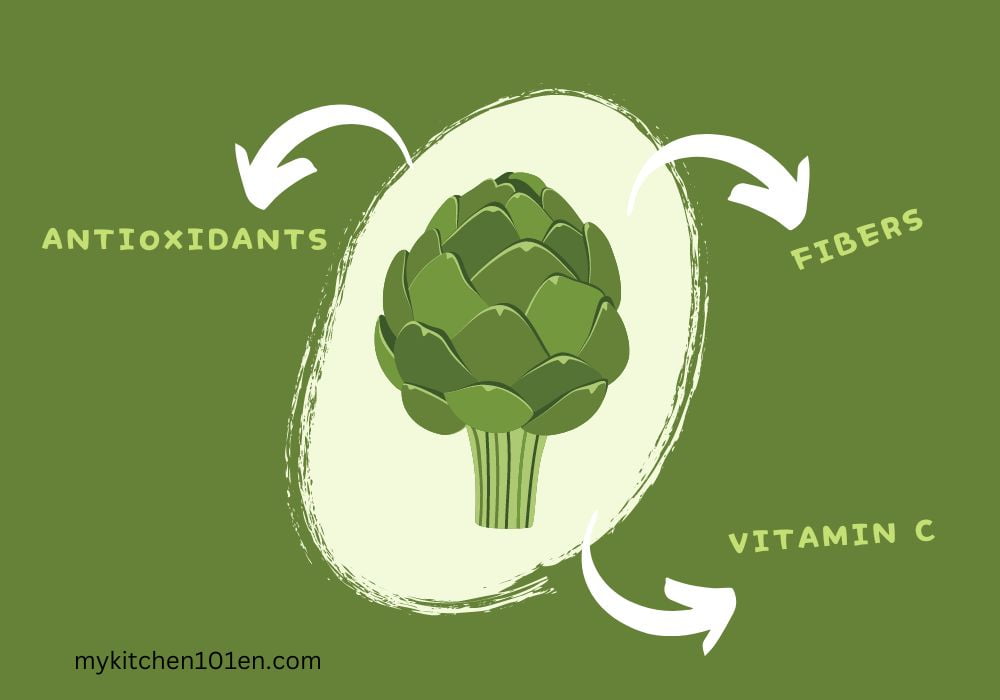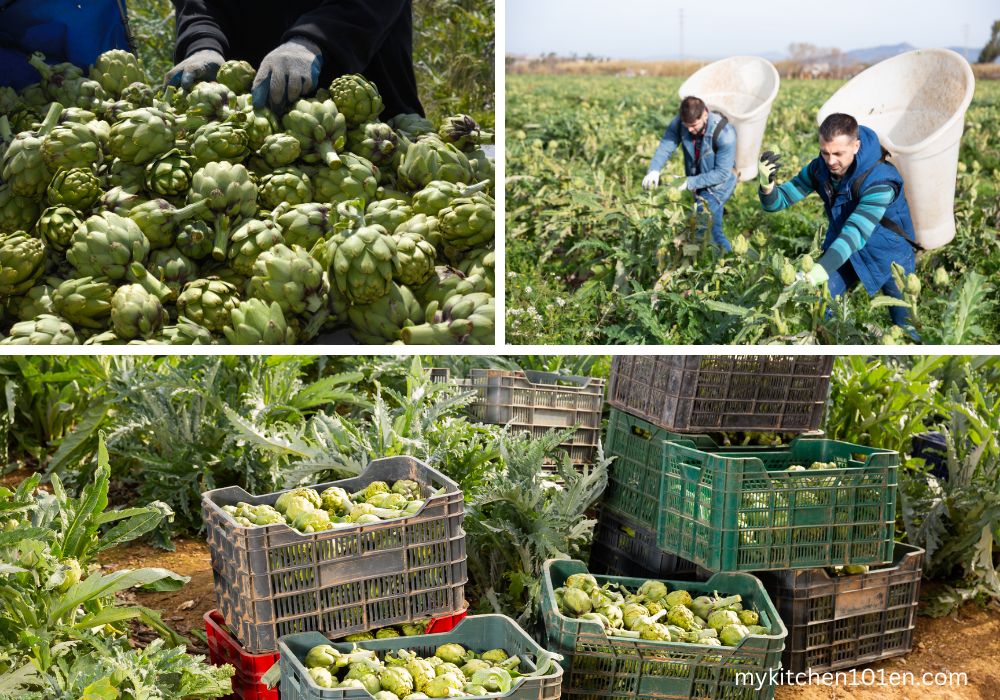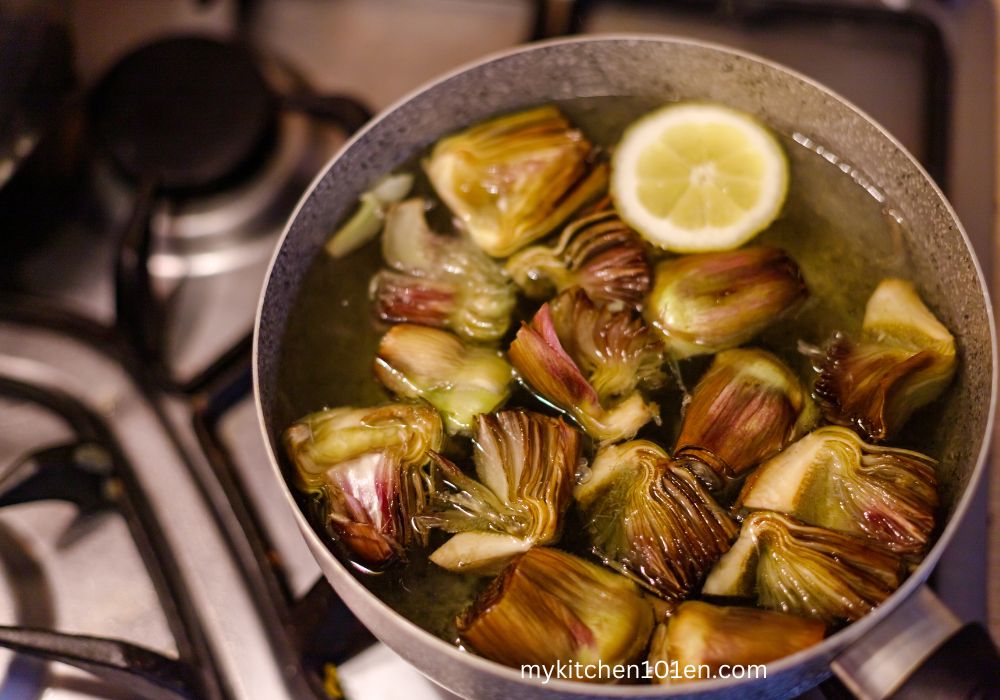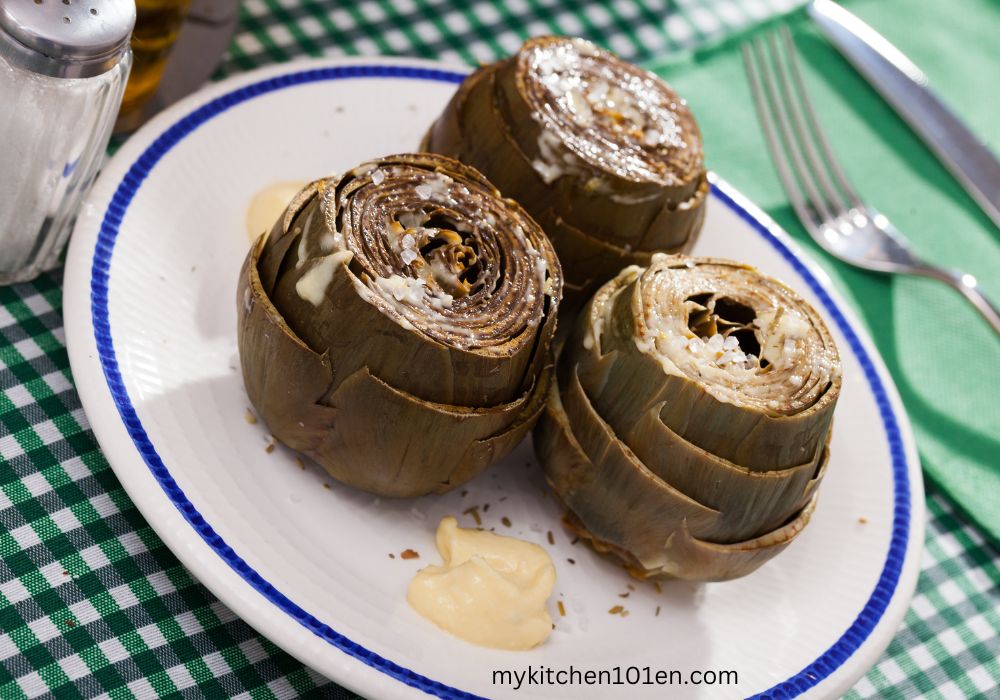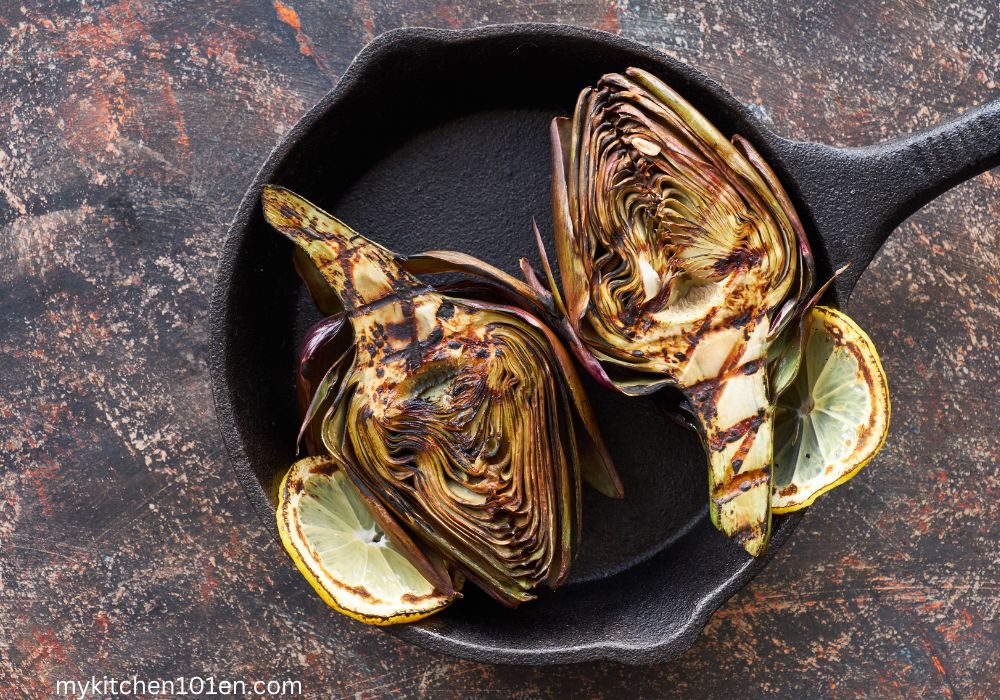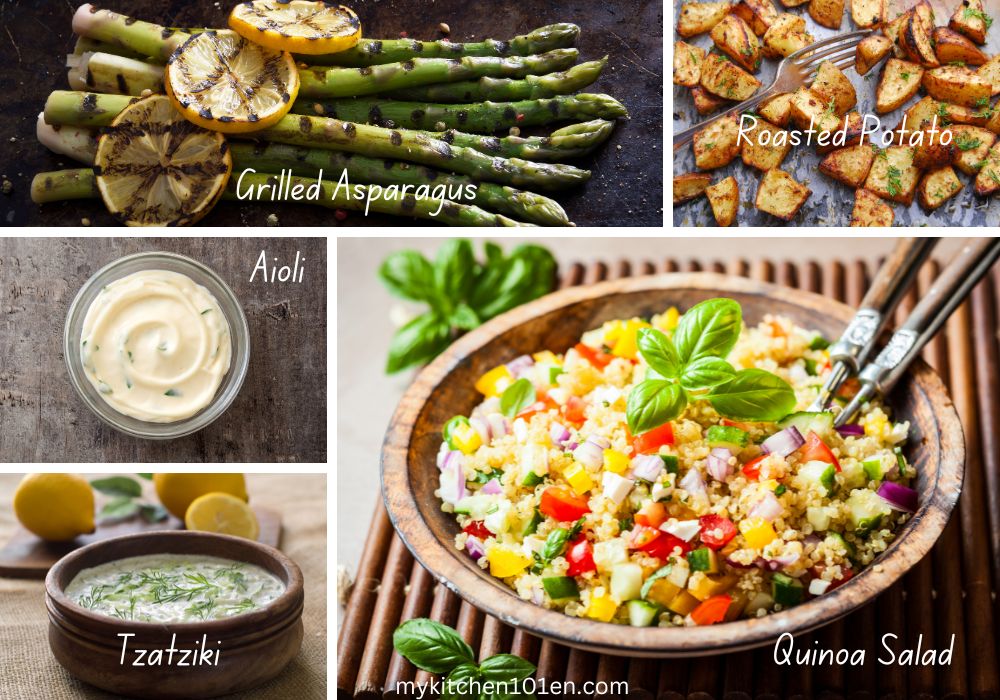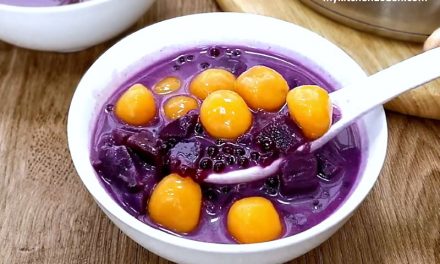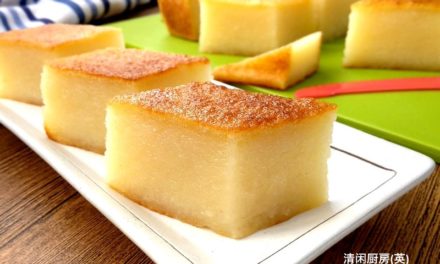Artichokes are a unique vegetable that can be intimidating to cook for anyone who has never tackled the process before. While they may look like a complicated thistle, they are actually quite simple to prepare and cook. Artichokes are not only tasty but also nutritious. They contain fiber, vitamin C and antioxidants—all of which promote good health.
In this article, we’ll look at many ways to cook artichokes. This will help you enjoy their special taste even more.
Artichokes have been a favorite food for a very long time.
People in ancient Greece and Rome grew them and loved to eat them. They also thought that eating artichokes could help with digestion and even fix hangovers.
Nowadays, people all over the world love artichokes for their soft hearts and leaves that are fun to bite into.
Despite their popularity, many people shy away from cooking artichokes at home because they seem difficult to prepare. With the right approach, anyone can become an expert at cooking this delicious vegetable.
Table of Contents
Why Artichokes Are So Healthy
Before we dive into the art of cooking artichokes, let’s take a moment to appreciate their incredible health benefits.
Artichokes are a powerhouse of both soluble and insoluble dietary fiber. Soluble fiber can boost your digestion, while insoluble fiber aids in maintaining a healthy digestive tract.
But that’s not all. These green wonders are loaded with antioxidants such as quercetin and rutin, which actively safeguard your cells against damage from harmful free radicals.
And guess what? If you’re aiming to up your vitamin C game without resorting to gulping down loads of orange juice, artichokes are your answer.
A single medium-sized artichoke boasts about 25% of the daily recommended intake of this vital nutrient!
So, in cooking and enjoying artichokes, you’re not only treating your taste buds but also doing your health a massive favor.
The basic nutritional content of a medium-sized artichoke.
| Nutrient | Amount |
|---|---|
| Calories | 60 |
| Protein | 4.2 grams |
| Fiber | 7 grams |
| Fat | 0.2 grams |
| Carbohydrates | 13.5 grams |
| Vitamin C | 15% of the RDI |
| Vitamin K | 18% of the RDI |
| Folate | 22% of the RDI |
| Magnesium | 19% of the RDI |
| Potassium | 9% of the RDI |
Please note that the exact amounts can vary depending on the size of the artichoke and the specific nutritional database used. RDI stands for Recommended Daily Intake.
How to Choose Artichoke
When you find yourself strolling down the produce aisle of your supermarket or browsing the vibrant stalls at your local farmers’ market, remember these helpful pointers:
- Look at the color: The best artichokes are vibrant, deep green. Some may have a bit of a purple hue, which is perfectly fine. Avoid artichokes that are significantly discolored, brown, or have large black spots, as these could be signs of age or poor handling.
- Check the leaves: The leaves of a fresh artichoke should be tight and closed. If they are opening up or appear to be shriveled, wilted, or drying out, the artichoke is likely past its prime. Also, it’s normal for an artichoke to have a few small splits or cracks near the stem, but large splits can indicate that the artichoke is too old.
- Feel the weight: Pick up the artichoke and assess its weight. It should feel dense and heavy for its size. This is a good indication that the artichoke is fresh and full of moisture.
- Give it a squeeze: Give the artichoke a gentle squeeze. A fresh artichoke will squeak a bit when squeezed. This is a good sign!
- Examine the stem: The stem should be firm and not overly dried out. While a little browning at the cut end of the stem is normal, avoid artichokes with stems that are significantly discolored or shriveled.
Choosing the right artichoke is the first step to a delicious meal. And remember, once you’ve selected your perfect artichoke, keep it refrigerated until you’re ready to cook it to help it maintain its freshness. Enjoy your cooking adventure!
The artichoke is the official state vegetable of California. In fact, nearly all of the artichokes in the United States are grown in California, with the town of Castroville declaring itself the “Artichoke Center of the World.”
The Basics: Preparing Your Artichoke
Before you jump into cooking artichokes, it’s essential to know how to prepare them correctly. While some people choose to cook them with the stems attached, it’s more common to remove the stems beforehand since they can be quite tough.
- Start by rinsing your artichokes under cold running water to wash away any dirt or debris.
- Next, take a sharp knife and cut off about an inch from the top of each artichoke. Doing this eliminates the pointy tips of the leaves and creates a flat surface for steaming or boiling.
- Now, trim the stem to roughly an inch in length. If needed, use a paring knife to gently peel away any tough outer layers until you reach the tender flesh underneath.
Congratulations! Your artichokes are now prepped and primed for cooking. Let the culinary adventure begin!
Preparation
Rinse the artichokes under cold water to remove any dirt or debris
Before you start cooking artichoke, proper and thorough cleaning is essential.
Start by running the artichokes under cold water to dislodge any dirt or debris hidden in their crevices, especially around the leafy areas and stem.
Once they’re clean, pat them dry gently using a paper towel. This step is crucial as it helps get rid of excess moisture, ensuring a smooth cooking process later on.
Cut off the top inch of the artichoke with a sharp knife
Using a sharp knife, skillfully slice off approximately an inch from the top of each artichoke. This action removes the tough leaf tips and unveils part of the scrumptious heart within.
A sharp knife is recommended here as a dull one can result in uneven cuts and make the artichoke more challenging to handle.
Trim the stem so that it is about an inch long
The artichoke’s stem might seem tough and fibrous, but with the right preparation, it transforms into a delightful treat.
Use a sharp knife to peel away the stem’s hard outer layers until the tender interior is exposed.
Leave about an inch of stem, then use a vegetable peeler or paring knife to remove any remaining tough exterior layers. You’ll be left with a tender stem ready to be cooked alongside your artichokes.
By spending a bit of extra time preparing your artichokes correctly, you’re paving the way for a successful cooking experience. So, take your time, follow these steps diligently, and the results will be undoubtedly worth it!
How to Cook Artichokes: Cooking Methods
Boiling Artichokes
Boiling is a popular and easy method to cook artichokes, turning them into a soft and delicious treat.
- Start by grabbing a large pot and filling it with water, enough to cover the artichokes. To enrich the taste, stir in some salt and squeeze in some lemon juice.
- Next, put the artichokes in the water and heat it until it boils.
- When it starts to boil, turn the heat down and let it simmer for 25-30 minutes. You’ll know they’re ready when you can easily poke them with a fork.
The fun part about boiling artichokes is that you can add different flavors to the water. Some people like to add garlic or bay leaves. Others might prefer rosemary or thyme. You can try different herbs or spices and see what you like best!
Steaming Artichokes
If boiling isn’t your style, you can try steaming your artichokes. Steaming is a gentle way to cook that keeps more of the vegetable’s natural taste.
- To steam your artichokes, put about an inch of water in a pot. Add some salt and lemon juice for an extra taste.
- Next, put a steamer basket in the pot and put the artichokes in the basket.
- Cover the pot with a lid and put it on medium-high heat on your stove. Let them steam for about 25-30 minutes until they are soft enough to eat.
A good thing about steam is that it doesn’t wash away any of the good stuff in the artichokes, like boiling can sometimes do.
Grilling Artichokes
Grilling is another fun way to cook artichokes. Grilling gives them a smoky taste that’s really unique.
- Start by getting your grill hot. Set it to medium-high heat.
- Cut your artichokes in half from top to bottom and brush each half with olive oil.
- Put them on the grill, cut side down, and cook them for about 5-6 minutes. They should get brown and a bit charred.
When they’re done, you can make them even tastier by dipping them in a sauce. Try mixing garlic, lemon juice, and mayonnaise for a yummy dip.
Artichoke Side Dishes and Dipping Sauces for a Complete Meal
Artichokes are versatile and pair beautifully with a variety of side dishes and dipping sauces. Here are a few simple yet delightful ideas:
Side Dishes
- Roasted Potatoes: Artichokes and potatoes are a match made in heaven. Toss some baby potatoes in olive oil, salt, pepper, and rosemary, then roast until golden. The crispiness of the potatoes complements the tenderness of the artichokes perfectly.
- Quinoa Salad: A light quinoa salad with cherry tomatoes, cucumber, feta cheese, and a lemon vinaigrette makes a refreshing side to balance the richness of the artichokes.
- Grilled Asparagus: Grilled asparagus with a little bit of lemon zest is a really good side dish for artichokes. This is especially true if you’re grilling the artichokes too. The grilled taste of the asparagus and the lemony flavor work really well with the taste of the artichokes.
Dipping Sauces
- Lemon Garlic Butter: Melt some butter and mix in minced garlic and a squeeze of lemon. This simple sauce enhances the natural flavor of the artichokes.
- Aioli: Aioli is a creamy garlic mayo sauce that’s a classic pairing with artichokes. You can add some herbs like parsley or dill for extra flavor.
- Tzatziki: This sauce made from Greek yogurt, cucumber, garlic, and dill will perk up even the most mundane of dishes.
Conclusion
In conclusion, artichokes may appear intimidating at first glance, but once you’ve mastered the basic preparation and cooking techniques, they turn into versatile and delightful ingredients. Whether you choose to boil, steam, or grill them, each method brings out a unique flavor profile, turning this humble vegetable into a culinary star.
Remember, side dishes and dips are the perfect partners to elevate your artichoke experience. From roasted potatoes and quinoa salad to tangy tzatziki and creamy aioli, there are countless ways to complement your deliciously prepared artichokes.
We hope this guide has given you the confidence to start your artichoke cooking journey. There’s a world of flavor waiting to be explored in each leaf and heart. So go ahead, roll up your sleeves, and get cooking. Your taste buds are in for a treat! Enjoy your artichoke adventure.
Related:
- How to Cook Hard-Boiled Eggs
- How to Bake Potatoes In Oven
- How to Extract Pandan Juice / Easy Pandan Extract
- How to Make Chinese Tea Eggs
- Cooking Salmon 101
Frequently Asked Questions about Cooking Artichokes
How do I choose a good artichoke?
Look for artichokes that are deep green, have tight leaves, and feel heavy for their size. If the leaves squeak when squeezed, that’s usually a good sign of freshness.
How should I store artichokes?
Artichokes should be stored in the refrigerator. Place them in a plastic bag to maintain humidity and they can last up to a week.
How do I know when an artichoke is cooked?
The artichoke is cooked when the leaves can be easily pulled off. The flesh at the base of the leaf should be tender and tasty.
Can I eat the whole artichoke?
No, not all parts of the artichoke are edible. The outer leaves, the inner fuzzy choke, and the stem need to be removed. Only the base of the leaves and the heart are edible.
What can I serve with cooked artichokes?
Artichokes can be served with a variety of dips. Melted butter, mayonnaise, garlic aioli, or vinaigrette are all popular choices.
Can I cook artichokes in advance?
Yes, cooked artichokes can be stored in the refrigerator for a few days. Just make sure to let them cool completely before storing them.
Are artichokes healthy?
Absolutely! Artichokes are a low-fat, high-fiber vegetable that contains vitamin C and K as well as folate and magnesium.
Can I freeze artichokes?
Yes, you can freeze artichokes. Make sure to clean and cook them first. Once cooled, they will keep in the freezer for up to several months—but no longer than that because they tend not to freeze well past their freshness date.
How can I prevent artichokes from turning brown?
Artichokes, like apples, can brown when cut and exposed to air. To prevent this, you can rub the cut surfaces with a piece of lemon.
Can I use canned or frozen artichokes instead of fresh ones?
Yes, you can. While fresh artichokes have a superior taste and texture, canned or frozen artichokes can be a convenient alternative and require less prep time.
How long to boil artichokes?
Boiling artichokes can take between 25 to 45 minutes, depending on their size. Here’s a general guide:
Small artichokes: 25 to 35 minutes
Medium artichokes: 35 to 40 minutes
Large artichokes: 40 to 45 minutes
You’ll know they’re done when the leaves can be easily pulled off, and you can pierce the stem with a knife with little resistance. The exact cooking time may vary, so it’s a good idea to start checking for doneness a bit earlier than the times listed above. Related: How to Boil Artichokes: A Step-by-Step Guide

